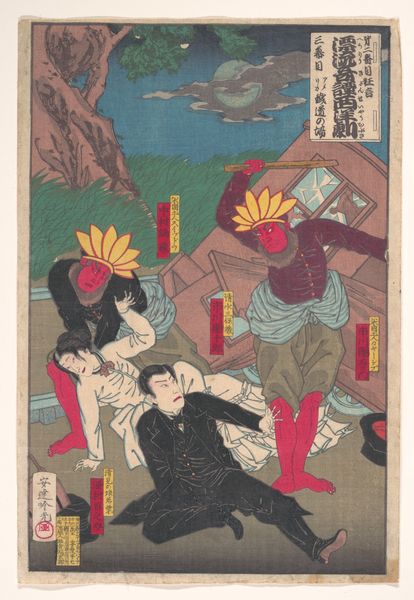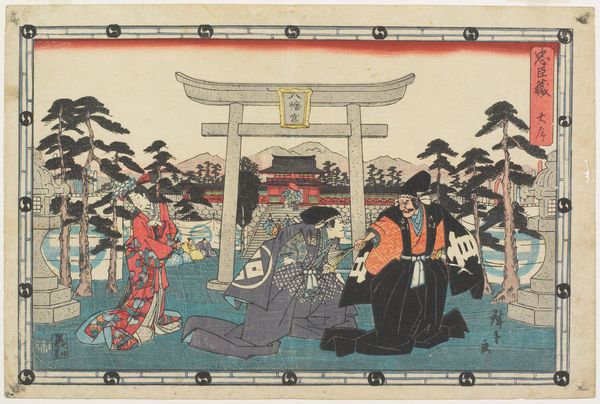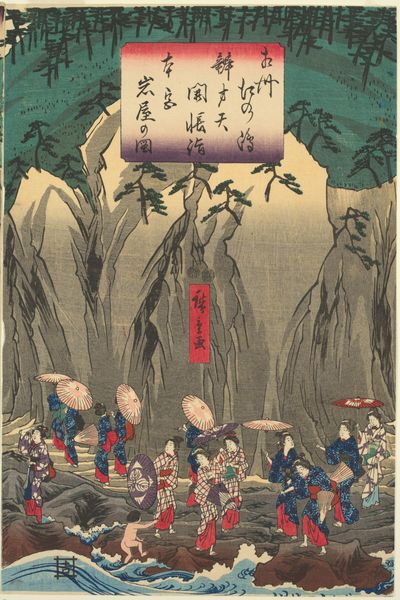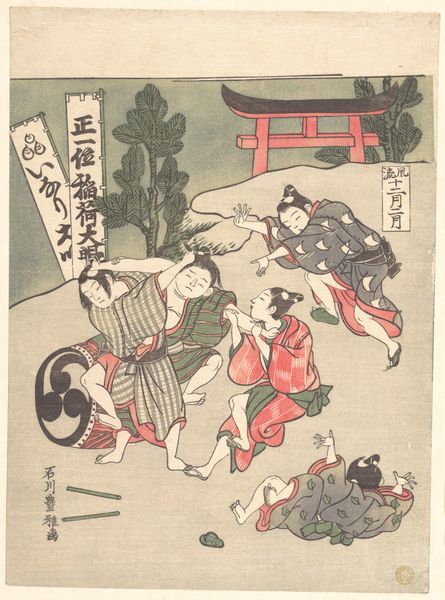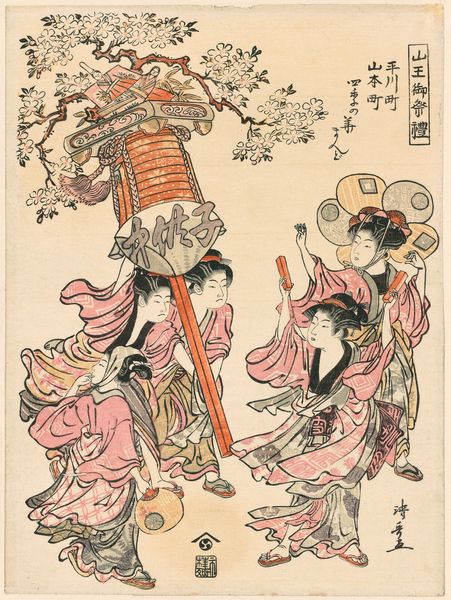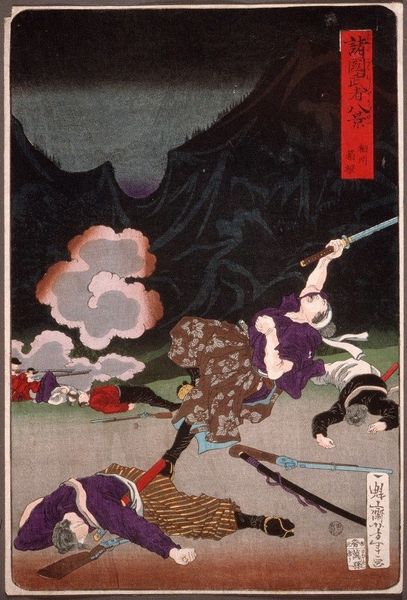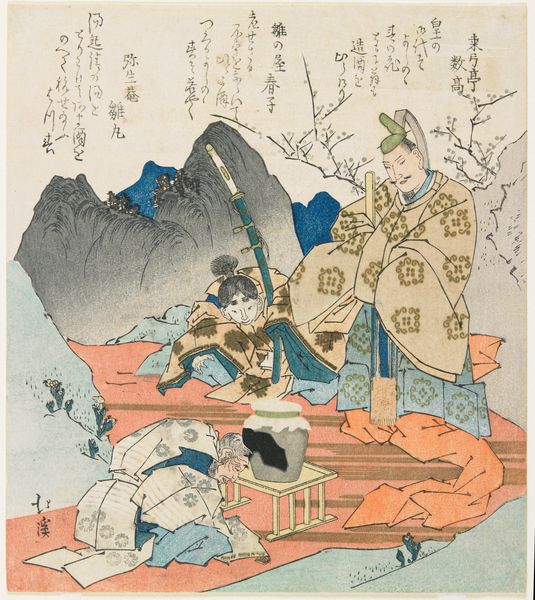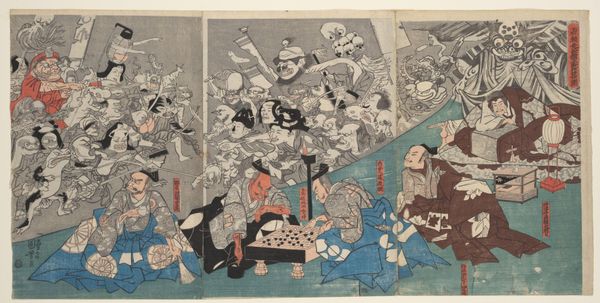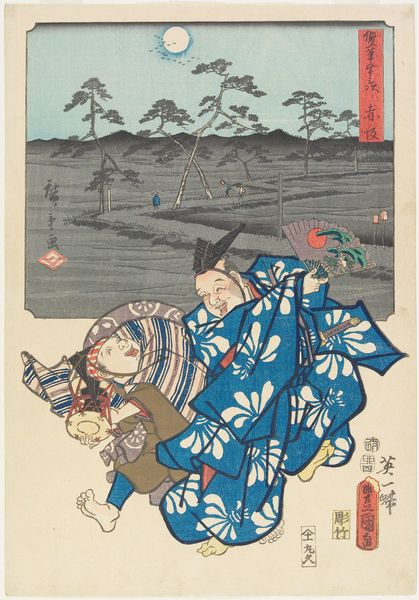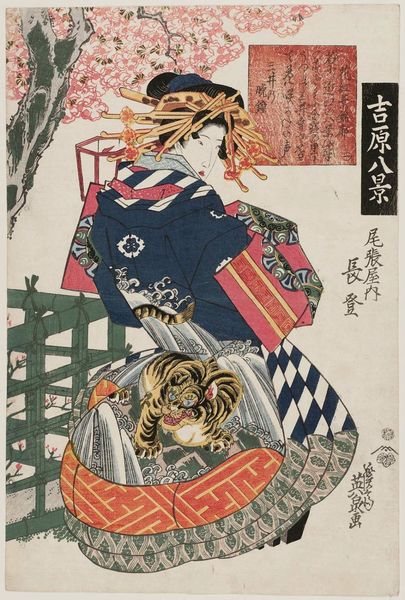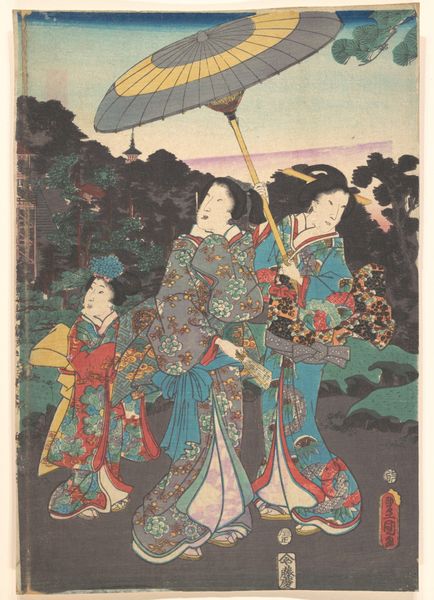
Copyright: Public Domain: Artvee
Editor: Here we have Tsukioka Yoshitoshi's print, "A Triple Wedding in the Family of the Farmer Matsunosuke," from 1875. The use of vibrant colors really draws me in. I'm curious, what jumps out at you when you look at this piece? Curator: The first thing that strikes me is the depiction of labor embedded in this celebratory scene. Look at the precise, repetitive patterns in the kimonos. That suggests industrialization, the commodification of clothing, which clashes directly with the image of a "farmer's family." It prompts questions about class tensions and consumer culture. Editor: So you’re seeing a commentary on the shift from agricultural to industrial society through the portrayal of clothing and lifestyle? Curator: Exactly! Consider also the *ukiyo-e* print medium itself. Initially a craft for the elite, woodblock printing became increasingly accessible to the masses. This democratization of art aligns with potential shifts in class identity depicted. What about the material realities, the ink, the wood, the rice paper that this image is impressed upon? Where were those raw materials sourced, and who did the labor to transform them? Editor: That makes me consider how the accessibility of this kind of art changed who could own and appreciate art. Did the availability of the materials influence who this piece might be speaking to? Curator: Undoubtedly. The mass-produced nature challenges conventional notions of 'high art,' encouraging dialogue about the value assigned to art based on its production process and consumption. So how does seeing these layered materials – the figures and news offset on this ground – shift our viewing of it? Editor: I see what you mean, viewing this not as just a single celebration, but something highlighting those competing cultural moments and changes of the era. Curator: Yes. It urges us to move beyond a purely aesthetic appreciation and think critically about its cultural impact and the economics that make its creation and dissemination possible. We should keep thinking about that for all artwork we come across.
Comments
No comments
Be the first to comment and join the conversation on the ultimate creative platform.
